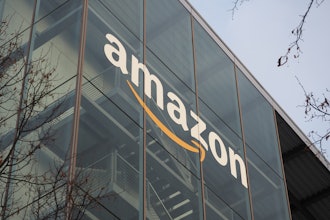
After a few harrowing years, the supply chain for electronic materials is bouncing back. Despite some lingering hiccups, the future of global logistics is brighter than ever if we can successfully apply what we learned during the pandemic and build dynamic supply chains that can weather the storms to come.
18 Months of Resiliency
During the last year and a half, "resiliency" has been the buzzword at Digi-Key and throughout the industry. That meant everything from Digi-Key and our partners building in redundancies and having plenty of backstock to revamping legacy projects to keep businesses on track.
As we enter recovery, part of healing means rebuilding customer trust. And by trust, I mean confidence in the global supply chain and the economy. Even as the supply chain gets healthier, one hiccup can still set off a cascading effect with enormous implications. Rebuilding this trust will take visibility into supply chain analytics so customers can see what's a hiccup and what's indicative of a larger, long-term trend.
That's why, as much as it's been good to be resilient, "resiliency" feels reactive versus proactive, and I'm heartened to see that beginning to shift.
 After a few harrowing years, the supply chain for electronic materials is bouncing back.Digi-Key Electronics
After a few harrowing years, the supply chain for electronic materials is bouncing back.Digi-Key Electronics
Building Back Stronger
Before and during the pandemic, supply chains were like dominos. One thing goes wrong, and the whole row goes down.
Think about the Ever Given, the container ship that got stuck in the Suez Canal for a week back in 2021. It was a single event that caused massive backups for hundreds of companies. How can we prevent those unpreventable events from having such a large, negative impact? That was just one event, nothing like the global impact of the COVID-19 pandemic.
We have to look ahead and begin planning for potential other natural disasters and changing regulations that could impact the availability of materials and components.
We've gotten past the "domino" stage of the supply chain. Now, it feels more like Jenga, where you can pull out a few pieces, and the tower is safe. But grab too many or the wrong one, and the whole thing crashes. We need to build a future where supply chains look like a Lego house: secure, able to be rearranged, and nearly indestructible.
Forces of the Future
Many forces need to be considered to build truly resilient, dynamic supply chains. A few that I'm watching closely are exponential supply and demand patterns, commodity shortages, the economy and how pricing impacts consumer behavior, and labor trends.
Exponential Supply and Demand
In a perfect world, supply and demand sync up evenly. But in the real world, often, one outpaces the other. I'm sure no one will forget certain consumer goods shortages of 2020. Or, in the electronics world, when so many people went remote during the pandemic, and everyone needed a new computer. Or when the world opened back up and the demand for new cars wildly rebounded.
On the flip side, oversupply can also cause issues and quickly eat through a business's bottom line. For example, issues like where to store the overstock, how to continue to sell it and make a profit, and is the inventory still desirable can stack up, causing headaches up and down the supply chain.
These pockets of exponential demand will continue to exist, as will moments of oversupply. Both must be built into forecasts to help stakeholders better manage inventory and adapt as forces shift the balance.
Commodity Shortages
Commodities like lithium and cobalt are in high demand but not always easy to procure. Producers who need hard-to-replace materials must factor in forces like potential tariffs, weather patterns, upcoming environmental regulations, and variable pricing on these commodities to ensure their production doesn't suffer.
One way that I see this particular trend being countered is by innovative product design. Engineers are using smaller geometries, so the needed amount of the given commodity is reduced without sacrificing the capability of the end product. We've seen this happen time and again, like with how small computers can be now versus how they started: as big as a room and exponentially less powerful.
It's that old proverb, "Necessity is the mother of invention." The need for these components isn't going away. But the availability could be reduced, which is why this is oddly one of the trends I'm most excited about. I'm looking forward to seeing what new technologies will come out of this.
Economy and Pricing
Obviously, the economy is always going to be a force that dictates just about everything. With rising inflation, consumers are looking to spend less but still get that bang for their buck, and that translates all the way up the chain. At the same time, between labor, the rising cost of materials, tariffs, and more, suppliers are getting squeezed on cost.
While there will never be a perfect model to forecast the economy, we can account for known forces and how they impact behavior, and that is what can be built into our projections.
Labor Shortages
We also need to be aware of forces like labor shortages that will impact product availability, like in Japan, where they need more than 200,000 engineers in the next couple of years to maintain current production levels. Japan in 2030 is expected to have 270,000 artificial intelligence and IoT jobs that it will be unable to fill.
One of the drivers of this trend is aging populations. Japan, especially, is struggling with this. The engineers who've been designing and building our components are now retiring, and there are fewer people available to fill those gaps.
Not only is there an inverted population pyramid at play here, but the increased need for these products is driving up the demand and is, thus, exacerbating this skill gap. Consider how many things require technologies that didn't exist even ten years ago. Now, everything is smart. Nearly every piece of your car now has an electronic component. And with the rise of IoT and connectivity? The demand is going to skyrocket, which means even more engineers and IT professionals are needed.
None of these forces are new, but the need to accurately build them into supply chain forecasts is only going to get more important. The pandemic helped highlight how important taking all these forces into account is, and I hope that lesson stays with us all.
Investing in Production
One way to account for the increased demand for electronic parts is, naturally, to increase production. And certainly, manufacturers have been doing this. But massive shifts in production take time.
For example, semiconductor fabs take years to build and then, even longer to produce the needed silicon parts and such. So, despite starting, say, three years ago, a facility could still be struggling to produce material.
Because production isn't something you can just hit "play" on, we need to be planning beyond today and tomorrow. To be truly dynamic, we need to be building for the next 10, 20, 50 years, today and building these productions into forecasts, too.
Innovation in Digi-Key's Supply Chain
Digi-Key is investing in supply chain innovations that will serve our customers for years to come. From opening our 2.2 million square foot/204,400 square meter Product Distribution Center expansion (PDCe) to keep pace with growing demand to the establishment of the largest Foreign Trade Zone (FTZ) in the United States, the team is examining every angle to ensure that their supply chain is dynamic now and during any challenges that come up in the future.
Digi-Key's Marketplace is an online platform with an extended list of manufacturers and distributors to sell products through Digi-Key, while shipping from the supplier. With 3.38 million active SKUs through this platform, when supply is tight, this additional resource is another way to ease supply chain tensions for our customers.
 Digi-Key recently opened its 2.2 million square foot/204,400 square meter Product Distribution Center expansion (PDCe) to keep pace with growing demand.Digi-Key Electronics
Digi-Key recently opened its 2.2 million square foot/204,400 square meter Product Distribution Center expansion (PDCe) to keep pace with growing demand.Digi-Key Electronics
The company is also supporting diversity with new and expanded roles in the supply chain to help bring new perspectives in developing innovative solutions and address labor shortages, including new regional supply chain positions around the globe.
 Josh Mickolio, supplier business development manager, wireless and IoT at Digi-Key Electronics.Digi-Key Electronics
Josh Mickolio, supplier business development manager, wireless and IoT at Digi-Key Electronics.Digi-Key Electronics
Across the board, the future of the supply chain must be more than resilient. It has to be dynamic to meet the needs of customers; and at every step, stakeholders need access to real-time information.
Digi-Key is proud to connect customers to the parts they need and is excited to continue building on innovative progress to meet the supply demands of today, tomorrow, and beyond.
Josh Mickolio, supplier business development manager-wireless and IoT at Digi-Key Electronics. Digi-Key is both the leader and continuous innovator in the high service distribution of electronic components and automation products worldwide, providing more than 14.9 million components from over 2,400 quality name-brand manufacturers. To learn more about Digi-Key's Supply Chain Solutions and Services and watch recent episodes of our Supply Chain Transformed video series, click here.






















